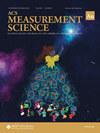Change Is the Only Constant: A Virtual Issue on Contemporary Catalysis
IF 4.6
Q1 CHEMISTRY, ANALYTICAL
引用次数: 0
Abstract
C are now critical in all areas of chemistry, from biochemistry to synthesis to energy to biomedical devices. It is perhaps not surprising then that the ACS Au community journals have published a wealth of exciting content in the area of catalysis. From among these publications, we have chosen to highlight a few examples in this virtual issue to demonstrate the excellence and diversity of these contributions and the field, as representations of catalysis in the early 2020s. Heterogeneous catalysis has been critical in improving modern life and environmental technologies, from the Haber− Bosch process, to the catalytic converter for cars, to upgrading chemicals. For example, 5-hydroxymethylfurfural (HMF) and levulinic acids can be upgraded to HMF levulinate for biorefining (10.1021/acsorginorgau.2c00027). Recent efforts have focused on designing catalysts to increase product selectivity and sustainability (10.1021/acsnanoscienceau.2c00057). There is a wealth of work on the conversion of carbon dioxide into fuels and value-added products, e.g., cyclic carbonate (10.1021/acsmaterialsau.1c00012), and the abatement of other greenhouse gases like methane (10.1021/ acsenvironau.1c00034). Researchers are also studying the development of heterogeneous catalysts for renewable fuel production, e.g., jet fuel via hydrodeoxygenation (10.1021/ acsengineeringau.2c00015). Challenges in managing omnipresent polymer waste have motivated research on nextgeneration heterogeneous catalysts for chemical recycling of, e.g., PET (10.1021/acsengineeringau.2c00029). Recently, zeolite and zeolite-supported catalysts have become popular for applications such as diesel oxidation (10.1021/acsengineeringau.1c00016) and ethene dimerization (10.1021/acsengineeringau.1c00014). It is important to note that although many of these new catalysts are focused on moving the chemical and fuel industry toward better sustainability, there is also a wealth of effort in making the catalysts themselves more sustainable by moving to catalysts made from earth abundant elements instead of precious metals. Homogeneous catalysts are integral to the chemical, polymer, and pharmaceutical industries. These catalysts are used to both increase reaction rates and improve selectivity. In the polymer field, researchers have designed organometallic catalysts for making hyperbranched ethylene oligomers and ethylene/methyl acrylate co-oligomers (10.1021/acspolymersau.1c00039) and have studied borate cocatalysts for ethylene copolymerization (10.1021/acsorginorgau.2c00020). In the pharmaceutical area, researchers have been interested in biscyclometalated chiral-at-iridium/rhodium complexes for asymmetric catalysis in organic synthesis (10.1021/acsorginorgau.1c00032). Researchers have also been studying trinuclear complexes enabling more efficient C−C bond-forming transformations (10.1021/acsorginorgau.2c00029). Recently, organocatalysts have also become popular, including the use of diphenylprolinol silyl ether for catalyzing the asymmetric Michael reaction (10.1021/acsorginorgau.1c00054). Depending on the application, some of these homogeneous catalysts are utilized “as-is” in industry, but there has also been considerable effort in the past decade at “heterogenizing” molecular catalysts. Electrocatalysts can be heterogeneous, homogeneous, or biological, but recently have been widely studied for energy conversion and electrosynthesis. For decades, there have been efforts to improve catalysts for fuel cell and electrolyzer processes (i.e., hydrogen oxidation, oxygen reduction, hydrogen evolution, and oxygen evolution) with an effort to minimize the use of precious metals through the transition from precious metal blacks, to precious metal nanoparticles supported on nonprecious metal supports, to core−shell nanoparticles. In recent years, this focus on lowering the precious metal content has expanded to attempting to eliminate the precious metals, such as the development of manganese oxide films for the oxygen evolution reaction (10.1021/acsnanoscienceau/3c00002). Also, a recent large effort in the field of electrocatalysis has been in developing stable and sustainable electrocatalysts for challenging transformations. For instance, researchers have developed metal chalcogenide materials for carbon dioxide reduction to fuels and nitrogen reduction to ammonia (10.1021/acsmaterialsau.1c00006). Although metal nanoparticles are still the most popular electrocatalysts, there have been renewed efforts to develop stable and highly active single-atom electrocatalysts (10.1021/acsmaterialsau.1c00041), while others are focusing on intermetallic nanoarchitectures (10.1021/acsnanoscienceau.2c00045). Some of these electrocatalysts have also been utilized for organic electrosynthesis, e.g., the reduction of substituted nitrobenzenes to anilines using polyoxometallate mediation (10.1021/acsorginorgau.2c00047), and for biosen-变化是唯一不变的:当代催化的一个虚拟问题
本文章由计算机程序翻译,如有差异,请以英文原文为准。
求助全文
约1分钟内获得全文
求助全文
来源期刊

ACS Measurement Science Au
化学计量学-
CiteScore
5.20
自引率
0.00%
发文量
0
期刊介绍:
ACS Measurement Science Au is an open access journal that publishes experimental computational or theoretical research in all areas of chemical measurement science. Short letters comprehensive articles reviews and perspectives are welcome on topics that report on any phase of analytical operations including sampling measurement and data analysis. This includes:Chemical Reactions and SelectivityChemometrics and Data ProcessingElectrochemistryElemental and Molecular CharacterizationImagingInstrumentationMass SpectrometryMicroscale and Nanoscale systemsOmics (Genomics Proteomics Metabonomics Metabolomics and Bioinformatics)Sensors and Sensing (Biosensors Chemical Sensors Gas Sensors Intracellular Sensors Single-Molecule Sensors Cell Chips Arrays Microfluidic Devices)SeparationsSpectroscopySurface analysisPapers dealing with established methods need to offer a significantly improved original application of the method.
 求助内容:
求助内容: 应助结果提醒方式:
应助结果提醒方式:


